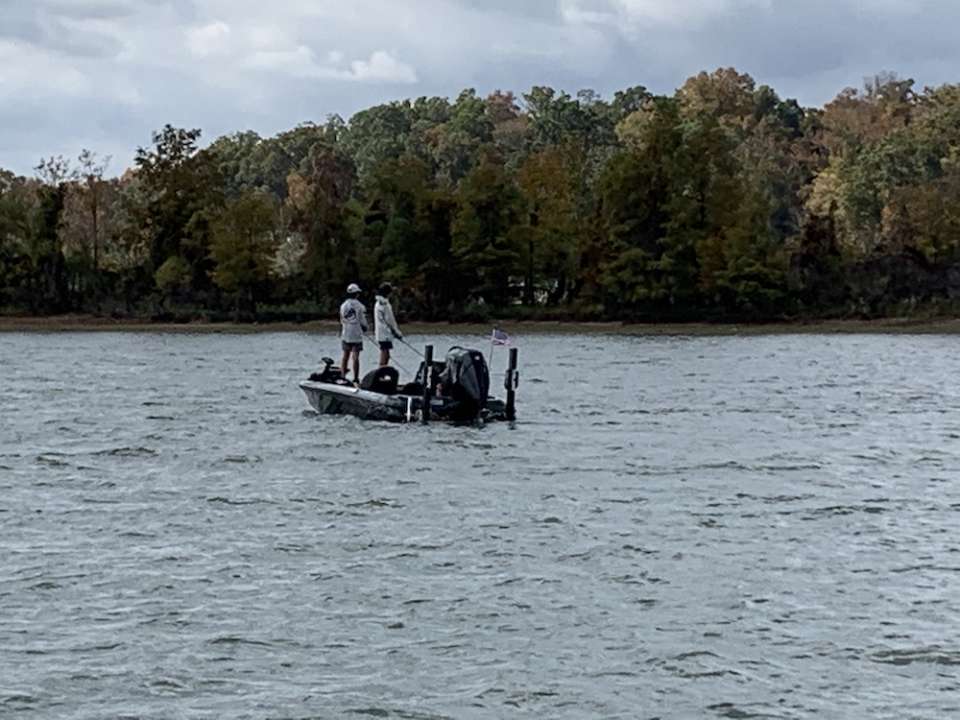
Through the first two days of competition at the Mossy Oak Fishing Bassmaster High School National Championship presented by Academy Sports + Outdoors, mixed bags of largemouth and smallmouth have dominated the weigh-in stage, including the 22 pound, 2 ounce bag weighed in by leaders Tucker Smith and Hayden Marbut which include four smallmouth.
While smallmouth are a native species in Kentucky Lake, as well as the rest of the Tennessee River Reservoirs, largemouth have largely dominated tournaments on the national stage, which begs the question why are so many smallmouth crossing the stage this week?
Gene Gilliland, B.A.S.S. Conservation Director, said it’s likely due to the timing of the tournament, not because there are more smallmouth in the lake currently.
“The population hasn’t really changed that much in the last several years. I don’t know the exact ratio, but it is probably on the lower side in terms of total number of smallmouth versus largemouth,” he said. “What is different this time compared to previous times when we’ve been here is the lake is down four feet and a lot of the traditional largemouth shoreline cover is out of the water. It is going to pull fish offshore.”
The low lake levels draw the largemouth to places that smallmouth normally occupy like rock piles, bars, ledges and points, places Gilland said he believes many of the high schoolers competing this week have been fishing around.
The weather has turned generally cooler as well, he added, which fires up the smallmouth bite.
“You’ve got people from all over the country here,” Gilliland said. “It’s not like you have a lot of people who have a lot of experience and they are lucking into some of the bigger smallmouth. Now the teams that have more experience here may be trying to target some of those fish.”
Gilliland said populations of both smallmouth and largemouth have ups and downs from year to year and doesn’t have a real pattern to it. From his sources familiar with Kentucky Lake, Gilliland said two years ago there was a good class of largemouth and that there are now a lot of 12 to 13 inch largemouth in Kentucky Lake right now.
“With a 15-inch minimum, none of those fish are coming in,” Gilliland said. “There may be more largemouth than smallmouth right now, but we may not be seeing them right now because of the length limit. Two or three years down the road, we may see a complete turn around from what you are seeing now.”
A Note on Asian Carp in Kentucky Lake
Regardless of species, Gilliland said that everything he has heard from various agencies indicates there is still a sizable population of black bass in Kentucky Lake, despite the spread of the Asian Carp population.
“(Carp) eat the bottom of the food chain,” Gilliland said. “Ultimately they could affect shad numbers and survival of little baby bass. But everybody I listen to and from the conference calls I’ve been on says that we are on the edge of where it is potentially going to start causing an impact on the bass population.”
While the population has yet to be dramatically affected, it has affected the behavior of the bass population. As the carp population increases, Gilliland said the bass start to live in different places and feed in different areas.
“The bass are still in the lake, but aren’t living and doing the same thing they have done for a long time and the fisherman are having a hard time adjusting to that,” Gilliland said.

